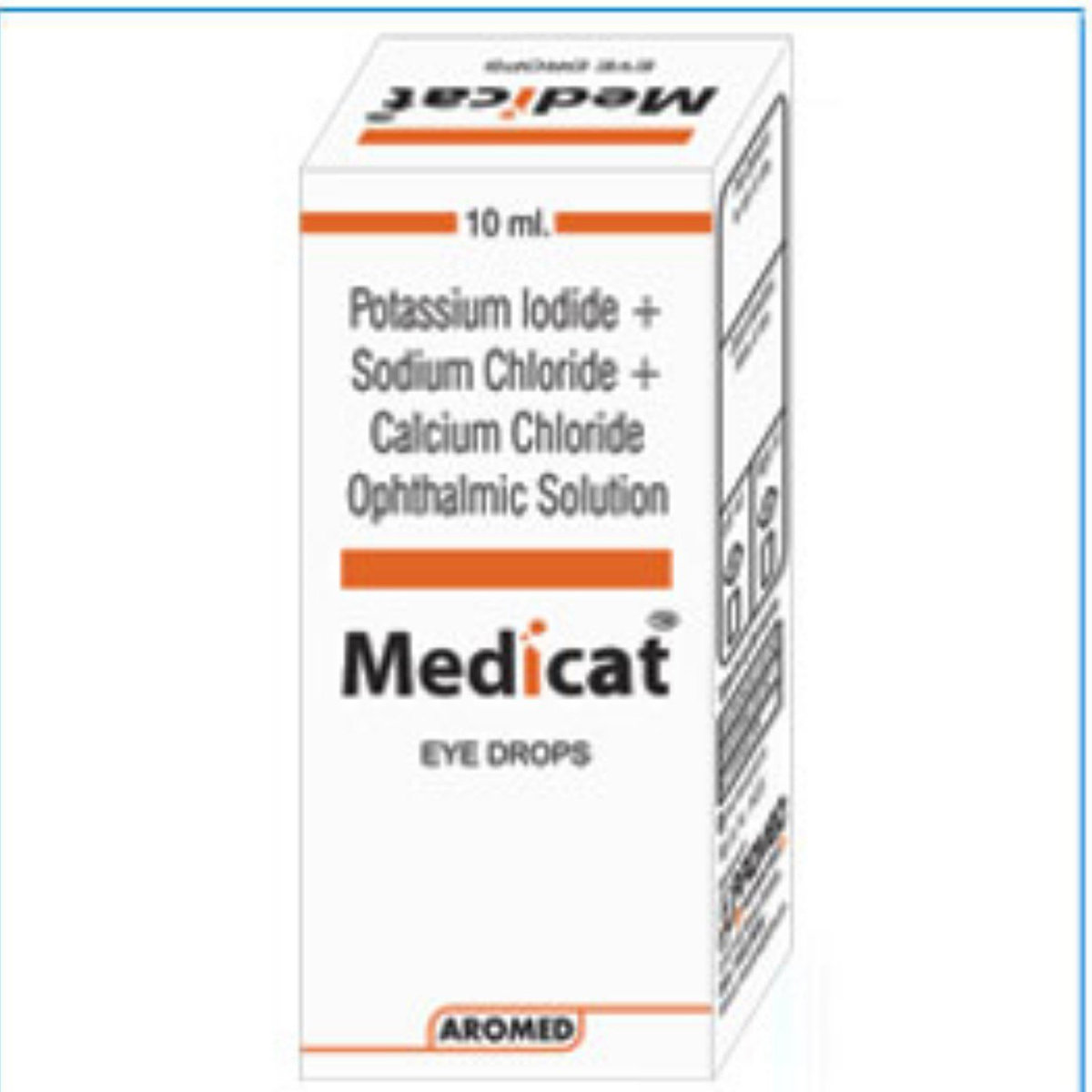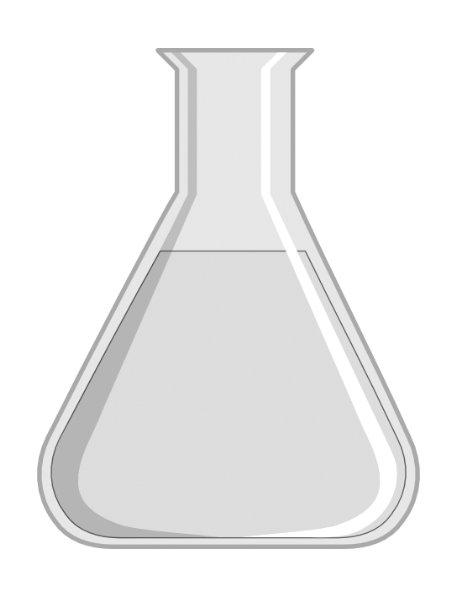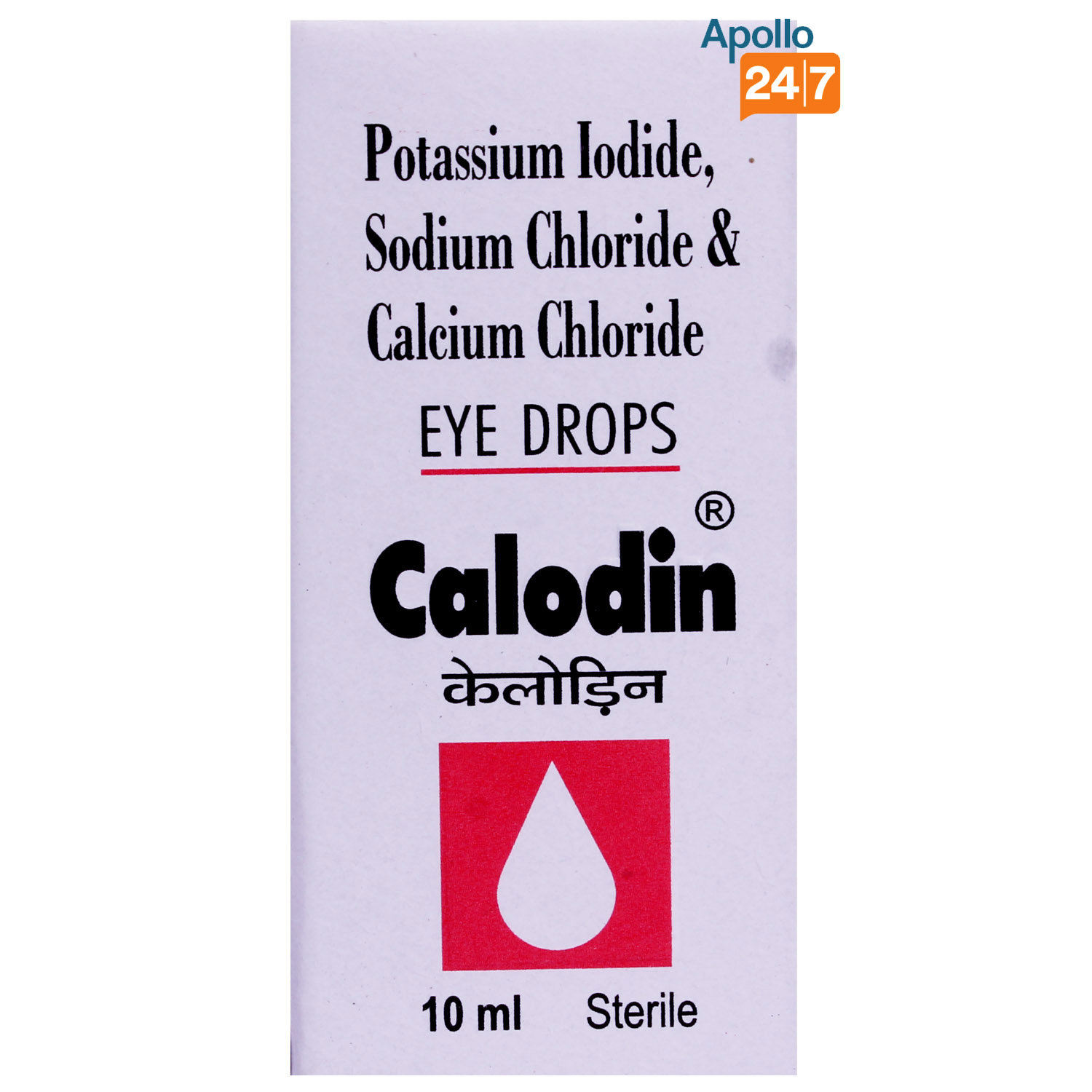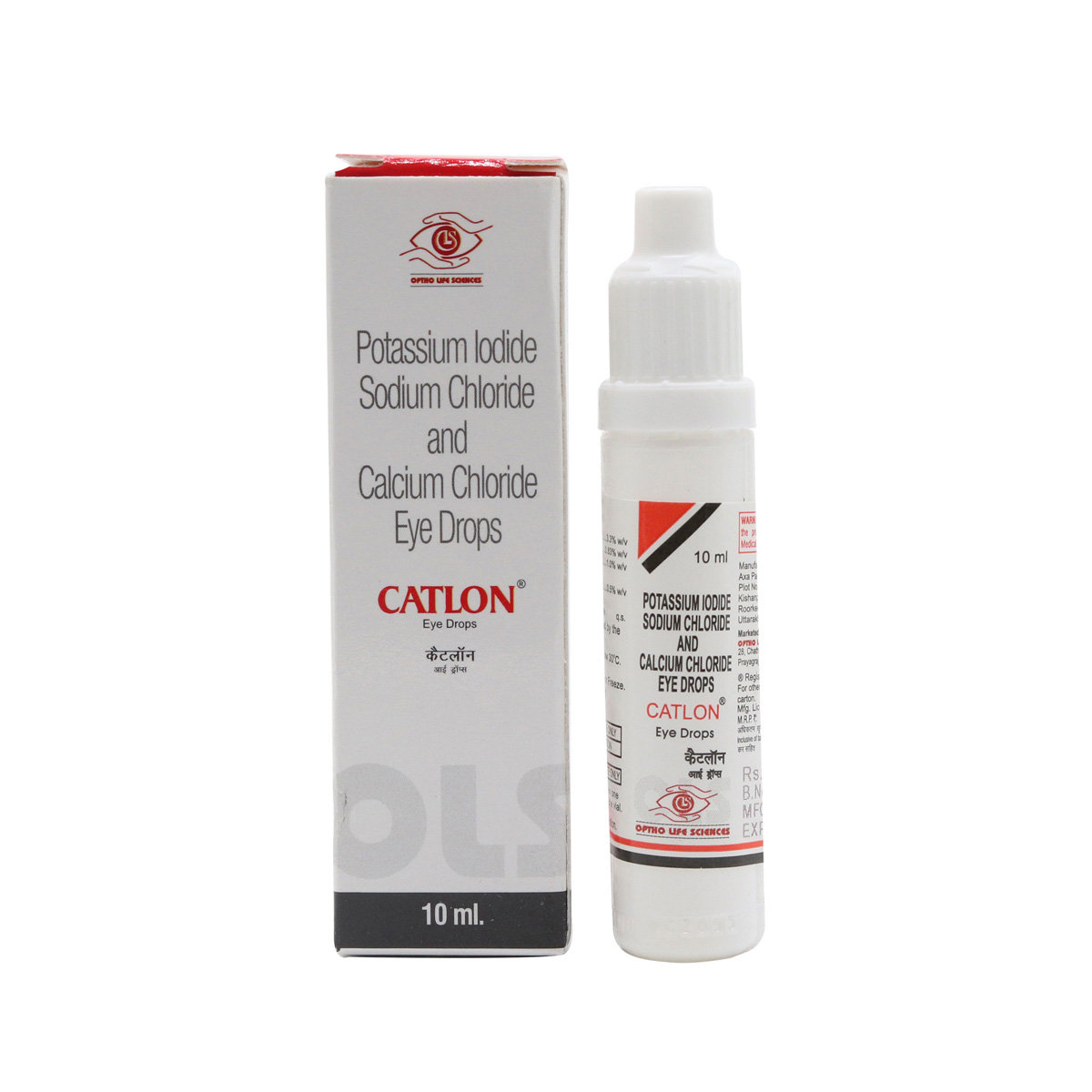Sodium Iodide+calcium
About Sodium Iodide+calcium
Sodium Iodide+calcium belongs to a group of medicines called ophthalmic agents used in the treatment of cataracts. A cataract begins when proteins in the eye form clumps that prevent the lens from sending clear images to the retina. Symptoms include blurry vision, trouble seeing at night, seeing colours as faded, and increased sensitivity to glare.
Sodium Iodide+calcium is a combination medicine that contains sodium iodide and calcium. Sodium Iodide+calcium works to prevent lenticular opacity in pre-operative cataracts (before cataract surgery) and is also used to prevent Posterior Capsular Opacity in post-operative cataracts (after cataract surgery). Thus Sodium Iodide+calcium together improves eyesight and prevents the formation of cataracts.
Take Sodium Iodide+calcium as prescribed by your doctor. You are advised to take Sodium Iodide+calcium for as long as your doctor has prescribed it for you, depending on your medical conditions. You may experience common side effects like blurred vision, headache or brow ache, irritation or redness of the eye, stinging or burning, tearing, and twitching of the eyelid. Most of these side effects of Sodium Iodide+calcium do not require medical attention and gradually resolve over time. However, if the side effects are persistent, reach out to your doctor.
Please do not use Sodium Iodide+calcium without consulting your doctor if you have allergic reactions to Sodium Iodide+calcium and its components. Avoid touching the dropper with bare hands or taking it closer to the eyelids while administering drops since it contaminates the dropper tip and solution. It is advised to check with your doctor before using Sodium Iodide+calcium if you are pregnant, currently breastfeeding or taking any other prescribed or non-prescribed medicines. Sodium Iodide+calcium should be used with caution in hyperthyroidism, heart problems and kidney diseases.
Uses of Sodium Iodide+calcium
Medicinal Benefits
Sodium Iodide+calcium contains sodium iodide, and calcium belongs to a group of medicines called ophthalmic agents used to treat cataracts. Sodium Iodide+calcium works to prevent lenticular opacity in pre-operative cataracts (before cataract surgery) and is also used to prevent Posterior Capsular Opacity in post-operative cataracts (after cataract surgery). Thus Sodium Iodide+calcium together improves eyesight and prevents the formation of cataracts.
Directions for Use
- Follow your doctor’s instructions on the dosage and timing of this medication to ensure safe and effective use.
- Lie down and tilt your head backwards. Pull your lower eyelid gently with your index finger to form a pocket. Instill the number of drops advised by the doctor into the pocket of the lower eyelid. Close your eyes for 1-2 minutes.
- Sodium Iodide+calcium is for ophthalmic use only.
- Avoid touching the container tip to your eye or lids to prevent contamination.
Storage
Side Effects of Sodium Iodide+calcium
- Blurred vision
- Headache or brow ache
- Irritation or redness of the eye
- Stinging or burning
- Tearing
- Twitching of the eyelid
Drug Warnings
Please do not use Sodium Iodide+calcium without consulting your doctor if you have allergic reactions to Sodium Iodide+calcium and its components. Avoid touching the dropper with bare hands or taking it closer to the eyelids while administering drops since it contaminates the dropper tip and solution. It is advised to check with your doctor before using Sodium Iodide+calcium if you are pregnant, currently breastfeeding, or taking any other prescribed or non-prescribed medicines. Sodium Iodide+calcium should be used with caution in hyperthyroidism, heart problems and kidney diseases.
Drug Interactions
Drug-Drug Interactions: Sodium Iodide+calcium may interact with corticosteroid medications (prednisolone, dexamethasone), anti-thyroid medicines (potassium iodide), and antibiotics (tetracycline, quinolone antibiotics).
Drug-Food Interactions: Consumption of alcohol while using Sodium Iodide+calcium does not improve the condition of cataracts. Hence avoid or limit the intake of alcohol.
Drug-Disease Interactions: Brief your doctor if you have a medical history of eye infection, bleeding disorders, hyperthyroidism, kidney problems, heart problems and allergic reactions to Sodium Iodide+calcium and its components.
Drug-Drug Interactions Checker List:
Safety Advice

Alcohol
unsafeConsumption of alcohol is not recommended during treatment with this Sodium Iodide+calcium. However, consult your doctor if you have concerns.

Pregnancy
cautionSodium Iodide+calcium is not recommended for use in pregnant women unless clearly necessary. All the risks and benefits should be discussed with the doctor before using this medicine.

Breast Feeding
cautionSodium Iodide+calcium is not recommended for use in breastfeeding women unless necessary. All the risks and benefits should be discussed with the doctor before using this medicine.

Driving
cautionSodium Iodide+calcium may cause side effects like blurred vision, affecting your driving ability. Hence, do not drive or operate machinery in such cases until your vision is clear after using Sodium Iodide+calcium.

Liver
cautionLet your doctor know if you have any history of liver diseases. Your doctor will weigh the benefits and potential risks before prescribing Sodium Iodide+calcium.

Kidney
cautionLet your doctor know if you have any history of kidney diseases. Your doctor will weigh the benefits and potential risks before prescribing Sodium Iodide+calcium.

Children
cautionNo data are available on the use of Sodium Iodide+calcium in children. Please consult your doctor.
Habit Forming
Diet & Lifestyle Advise
- Protect your eyes from UVB rays by wearing sunglasses outside
- Have regular eye exams
- Stop smoking
- Eat fruits and vegetables that contain antioxidants
- Maintain a healthy weight
- Check diabetes and other medical conditions regularly
- Rinse your eyes regularly with clean water.
- Do not rub your eyes even though some ophthalmic drugs make your eye itchy.
- Eat fiber rich food like whole grains, beans, lentils, berries, broccoli, peas and bananas.
Special Advise
- Try to maintain good hygiene to keep your eyes clean and irritant-free.
- Do not rub your eyes even though some ophthalmic drugs make your eye itchy.
- Wash your hands thoroughly, and do not touch the dropper before using drops to avoid contamination.
- If you are using two or more eye medications, wait for at least 15-20 minutes before delivering the next medication in the same eye to avoid dilution.
- If you wear soft contact lenses, remove them before putting in these eye drops and wait at least 15 minutes before putting your lenses back in.
Patients Concern
Disease/Condition Glossary
Cataract: A cataract is a dense, cloudy area in the eye's lens. A cataract begins when proteins in the eye form clumps that prevent the lens from sending clear images to the retina. The retina converts the light that comes through the lens into signals. It sends the signals to the optic nerve, which carries them to the brain. Symptoms include blurry vision, trouble seeing at night, and seeing colours as faded.
FAQs
Sodium Iodide+calcium is used in the treatment of cataracts.
Sodium Iodide+calcium consists of sodium iodide, and calcium belongs to a group of medicines called ophthalmic agents used in the treatment of cataracts. Sodium Iodide+calcium works to prevent lenticular opacity in pre-operative cataracts (before cataract surgery) and is also used for the prevention of Posterior Capsular Opacity in post-operative cataracts (after cataract surgery). Thus Sodium Iodide+calcium together improves eyesight and prevents the formation of cataracts.
Sodium Iodide+calcium causes common side effects like blurred vision, headache or brow ache, irritation or redness of the eye, stinging or burning, tearing, and twitching of the eyelid. Most of these side effects of Sodium Iodide+calcium do not require medical attention and gradually resolve over time. However, if the side effects are persistent, reach out to your doctor.
Please do not stop taking Sodium Iodide+calcium even if you feel better. Continue the course as suggested by the doctor.
Sodium Iodide+calcium can cause blurry vision for some time in the beginning. Avoid driving and operating machinery in such cases until you feel better. If the effect persists longer, seek medical attention.
Eye drop formulation of Sodium Iodide+calcium is for external use only. Wash your hands thoroughly before applying to avoid contamination, and do not touch the tip of the solution dropper. Remove your contact lenses before using them if you are wearing any. Lift and tilt your head back, look up and pull down the lower lid and put the drops in the affected eye.






